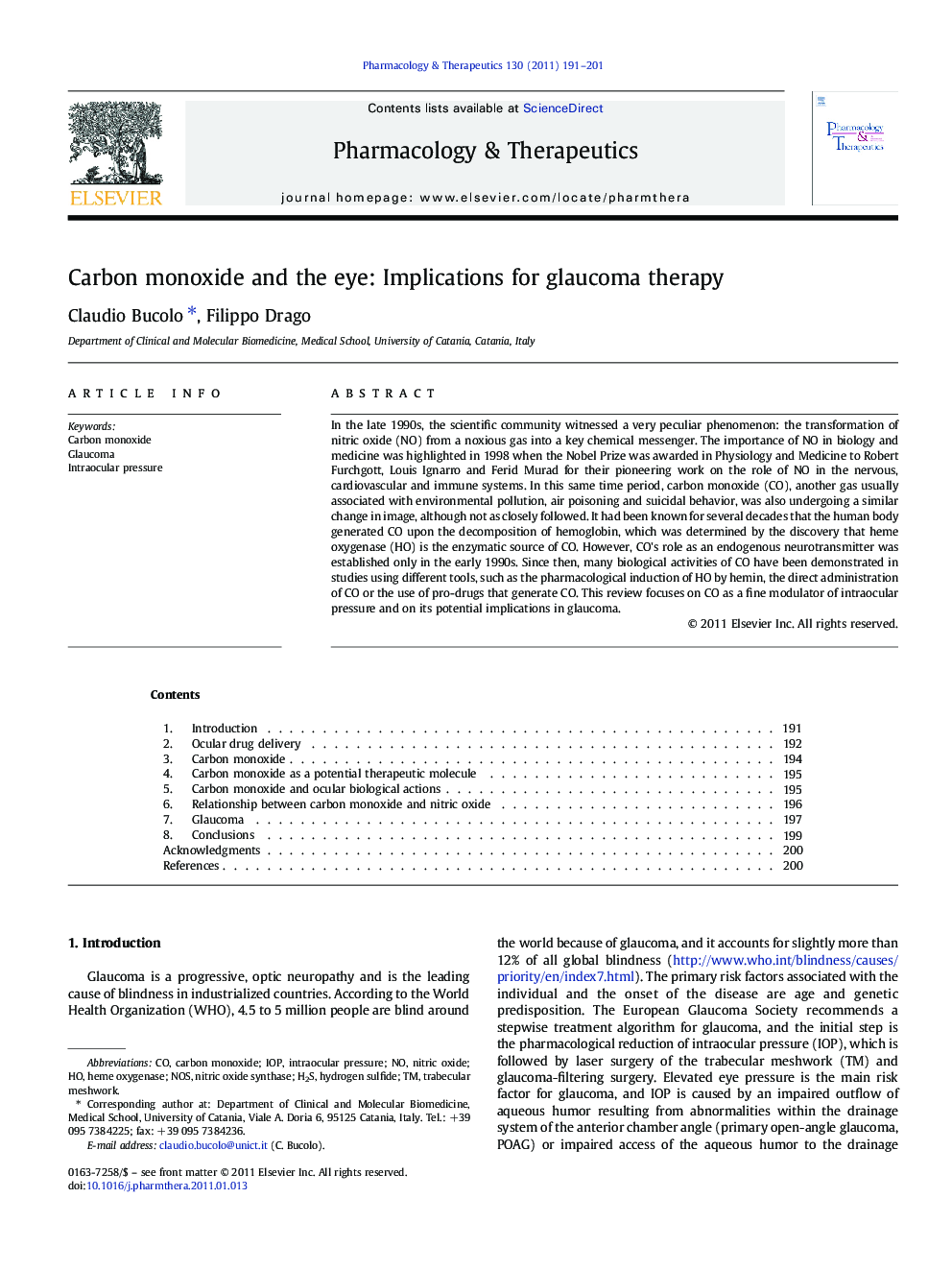| Article ID | Journal | Published Year | Pages | File Type |
|---|---|---|---|---|
| 2563394 | Pharmacology & Therapeutics | 2011 | 11 Pages |
In the late 1990s, the scientific community witnessed a very peculiar phenomenon: the transformation of nitric oxide (NO) from a noxious gas into a key chemical messenger. The importance of NO in biology and medicine was highlighted in 1998 when the Nobel Prize was awarded in Physiology and Medicine to Robert Furchgott, Louis Ignarro and Ferid Murad for their pioneering work on the role of NO in the nervous, cardiovascular and immune systems. In this same time period, carbon monoxide (CO), another gas usually associated with environmental pollution, air poisoning and suicidal behavior, was also undergoing a similar change in image, although not as closely followed. It had been known for several decades that the human body generated CO upon the decomposition of hemoglobin, which was determined by the discovery that heme oxygenase (HO) is the enzymatic source of CO. However, CO's role as an endogenous neurotransmitter was established only in the early 1990s. Since then, many biological activities of CO have been demonstrated in studies using different tools, such as the pharmacological induction of HO by hemin, the direct administration of CO or the use of pro-drugs that generate CO. This review focuses on CO as a fine modulator of intraocular pressure and on its potential implications in glaucoma.
